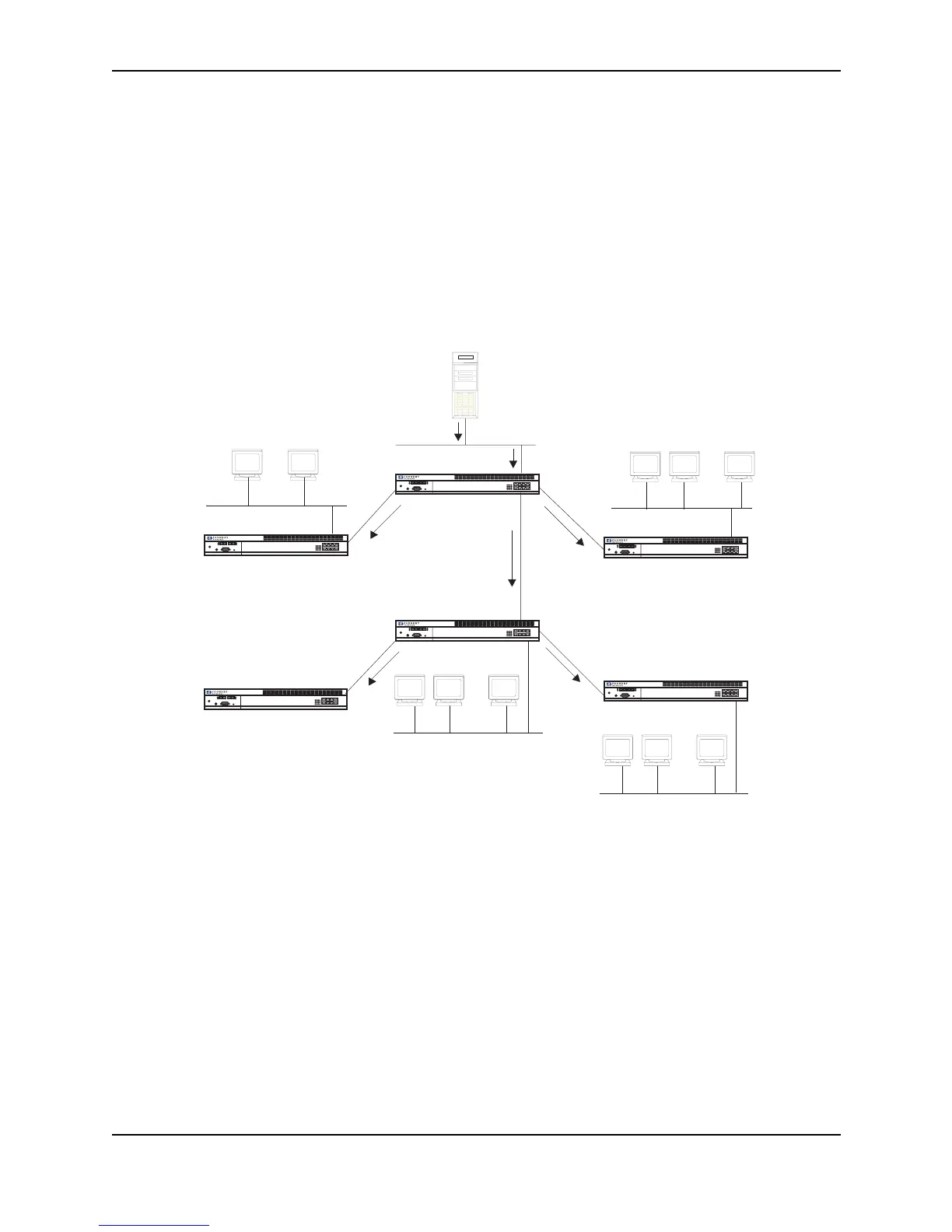Configuring IP Multicast Protocols
December 2000 18 - 5
For example, in Figure 18.1 the sender with address 207.95.5.1 is sending multicast packets to the group
229.225.0.1. If a PIM router receives any groups other than that group, the router discards the group and sends a
prune message to the upstream PIM router.
In Figure 18.2, Router R5 is a leaf node with no group members in its IGMP database. Therefore, the router must
be pruned from the multicast tree. R5 sends a prune message upstream to its neighbor router R4 to remove itself
from the multicast delivery tree and install a prune state, as seen in Figure 18.2. Router 5 will not receive any
further multicast traffic until the prune age interval expires.
When a node on the multicast delivery tree has all of its downstream branches (downstream interfaces) in the
prune state, a prune message is sent upstream. In the case of R4, if both R5 and R6 are in a prune state at the
same time, R4 becomes a leaf node with no downstream interfaces and sends a prune message to R1. With R4
in a prune state, the resulting multicast delivery tree would consist only of leaf nodes R2 and R3.
Figure 18.1 Transmission of multicast packets from the source to host group members
Console
NetIron
Console
NetIron
Console
NetIron
Console
NetIron
Console
NetIron
Console
NetIron
Group
Member
Group
Member
Leaf Node
(No Group Members)
R5
R3
R4
R6
R1
R2
Leaf Node
Leaf Node
Video Conferencing
Server
(207.95.5.1, 229.225.0.1)
(Source, Group)
...
Group
Member
Group
Member
Group
Member
...
Group
Member
Group
Member
Group
Member
...
229.225.0.1 229.225.0.1
229.225.0.1
Interrmediate Node
(No Group Members)
